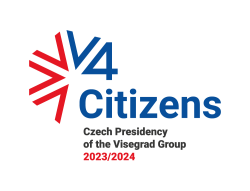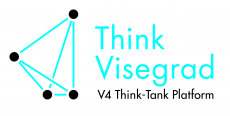
| Mon | Tue | Wed | Thu | Fri |
|---|---|---|---|---|
| 12 | 11 | 11 | 11 | 12 |
| Mon | Tue | Wed | Thu | Fri |
|---|---|---|---|---|
| 16 | 13 | 14 | 14 | 14 |
| Mon | Tue | Wed | Thu | Fri |
|---|---|---|---|---|
| 14 | 13 | 14 | 15 | 15 |
| Mon | Tue | Wed | Thu | Fri |
|---|---|---|---|---|
| 17 | 15 | 15 | 16 | 17 |
Global Contest for Brainpower
V4 in the race
Visegrad Group is already competing for talents on a global market and Hungary just moved ahead of the chase with its new global innovation hub opened in Budapest
Poland’s statistical office has just announced 20-years low of unemployment and record low percentage of people living in poverty. In the Czech Republic the unemployment rate is below the OECD estimate of full employment. Slovakia is one of the youngest countries in the EU and it has the most productive workforce in the region.
Hungary is a major beneficiary of the European Structural and Investment Funds per capita and now the country is being boosted by the opening of the GE Digital Hub. It should not come as a surprise that the V4 countries have a great deal of potential; the question is, if they are able to make the most of it?
According to data provided by the International Monetary Fund, in 2016 GDP growth in CEE[1] countries (3,1 %) is double that of the euro area (1,5 %) and growing. Central Europe moves ahead, however the growth race in the CEE countries is too low to catch up with advanced economies.
The region has started from a less-favored position, so now we must step up the pace. The IMF report hints at improving the labor supply, boosting investment and raising productivity. To put it in other words: to improve its performance CEE needs to open borders, stop overregulation and go digital.
The situation in the labor market is to some extent self-contradictory. The unemployment rates are decreasing but people complain that they cannot find a job, the employers struggle to find employees, while a large part of the working-aged population goes abroad for working.
It is also a paradox that we start working life later and stop it sooner. Emigration, demographic trends and skill shortages are ruining the Central European labor market. Yet the countries from the region don’t want to open borders for migrants.
Low-Salaries Trap
Low salary is the push-factor that influences human capital flight from Central Europe. According to the latest Better Life Index the average household net-adjusted disposable income per capita in the Czech Republic, Slovakia, Poland and Hungary comprises respectively 65%, 64%, 61% and 54% of the OECD average.
Yet, the wages in the region are lower than in most of the EU countries but also the average cost of living is lower than elsewhere, whereas the quality of life is getting better and better. In the last few years Warsaw, Budapest, Prague and Bratislava are steadily improving their liveability. What is missing is the Central European brand. The region is still not appealing for many but it started to attract prominent investors. The new investments will surely boost attractiveness of the region also because we are not talking anymore of low-end manufacturing but the very core of the development of the modern economies – the digital sector.
Global Companies Like the Region
Last year Google opened in Poland a start-up hub which is two in one: tech centre and entrepreneurship incubator.
Now the global digital industrial leader, General Electric, is investing nearly 30 million USD in the new Digital Hub that was opened in Budapest on October 6th, 2016. There are five other GE Digital Hubs around the world, the one in Budapest is the very first in Europe. Why did the global giants decide to invest in Central Europe?
In recent years Hungary and Poland were amongst the fastest growing economies in the EU. Very good digital infrastructure – better (because it is newer) than in other parts of Europe – makes Central Europe an excellent environment for creative and digital industries. New Europe 100 challengers show huge innovation potential of Central Europeans. In fact, human capital is the best that the region has to offer.
Local Brain Resources
The New Europe is doing very well in the world’s education rankings. The OECD’s Programme for International Student Assessment (PISA) reveals that students from Poland have distinguishing high score in mathematics.
The problem is that the high-skilled working-aged population often does not find high-skilled working positions. In the past it caused sizable outflows of skilled labor. The new investments are expected to reverse that trend.
In an overview of the CEE, the signature strengths are the industrial traditions which should not be forgotten. Indeed the fusion of industry, data analyses and digital technology is the key for the future.
The experts point out that the regional labor market needs specialized workforce not only in areas like welding, electrical installations and automated technology but it need also IT specialists, data scientists, IoT solution architects and industrial computer engineers.
Cedefop (an EU agency that analyses training policies and the labor market) predicts that by 2025 around a third of job opportunities in the V4 countries will be for high-level professional jobs in science, engineering, healthcare, business and education.
“We are not just looking for anyone, we’re looking for exceptional top talents. We want to motivate them by giving them work that matters, it’s also work that is pushing the boundaries. We’re developing young talent, giving them opportunities, motivating them with purpose, and creating a unique situation to push the 4th industrial revolution” – said John Ford, Director of the new GE Digital Hub.
The Competition for Talents Starts Now
The main stakeholders develop R&D programs and offer their employees training courses. They know that the top of the talented highly-skilled workers do not want just higher salary but look for challenges and self-development. “A lot of incentive for young people to work in the industry is to bring meaning” – said Joerg Bauer, President of GE Hungary. Purpose motivation is as important as profitability and that makes room for the success of new Central European hubs.
What is important today is to create truly conducive ecosystem. It’s not a secret that the V4 countries are aiming to boost digital innovation. Adopted strategies would have paid off better if applied to the region as a whole, not only the individual countries.
Competition is essential for the free market but cooperation can bring more profits. Recently, Maciej Kuziemski suggested that maximizing research collaboration, knowledge flow and student exchange within the Visegrad Group could help overcome common difficulties and boost regional outcome.
Some joint efforts have already been made. On October 12th, 2015 Poland, Hungary, the Czech Republic and Slovakia signed a Memorandum of Understanding on Regional Cooperation in the Areas of Innovation and Startups.
In July 2016, the Visegrad Patent Institute was launched. It is good news for companies and individuals inasmuch as the VPI is expected to reduce the anticipated cost of a patent application (by 25% for firms and 37% for individuals).
New Digital Culture
The most important recommendations for the region today are to identify and share good practices, set-up common position regarding the European regulations and implement common policies. It would be more efficient if not only governments but also MEPs and think tanks sit down at the table and work out together the best regional solutions.
The golden rule here is: the less, the better. According to the 19th Global CEO Survey over-regulation is the top concern for business leaders in Western Europe (cited by 81% of responders). In Central and Eastern Europe 86% of CEOs are also concerned about geopolitical uncertainty. The best investments will not be enough if the business friendly environment will be missing.
Last but not least is the increase of efficiency and effectiveness. The economic growth depends on productivity growth – the ratio between efficiency and effectiveness. That was the bottom line of the industrial revolutions in the past.
The ongoing 4th industrial revolution is based on raising productivity by digitalization. With new massive investments for the first time Central Europe has a chance to be in the heart of the industrial transformation.
“Europe is still very competitive from the industrial point of view but it struggles with productivity” – argued Peter Stracar, CEO for GE CEE. “The industrial internet represents a never before seen potential for the Hungarian and Central European economy. The region has the talent, knowledge and infrastructure to actively participate in the productivity revolution and the digitization of industry must be at the core of this mission” – he added.
It is still hard to believe that Central Europe can be at the forefront of the new industrial revolution but if a company such as General Electric is introducing the region to its global digital strategy it means that there is a rationale in this way of thinking. “GE is committed to put Central Europe in the driver’s seat to develop the building blocks for the Industrial Internet that will help companies in the region to turn information into insights and insights into outcomes” – Peter Stracar explained. Now the region has a real opportunity to bridge the gap with more advanced economies.
The Digital Culture Shortens the Distance
It could be seen at the opening ceremony of the GE Digital Hub when, unlike in the past, the US Ambassador to Hungary and the Hungarian Minister of Foreign Affairs and Trade were exchanging pleasantries.
Digitalization changes the way we live, work and spend our leisure time. It can reshape our region not only from the economic point of view.
The digital world is designed as borderless and inclusive.
We can imagine that cosmopolitan, multi-lingual, highly educated people coming to the new hub in Budapest could become a motor of change also for the public discourse in the region.
[1] V4 and Slovenia
Read the original text in Visegrad Insight.
This article has been automatically generated from the Visegrad Insight magazine website, a project funded by the International Visegrad Fund. The opinions expressed in this article do not necessarily have to represent the official position of the donor, the Visegrad Group, or the publisher (Res Publica Nowa).







